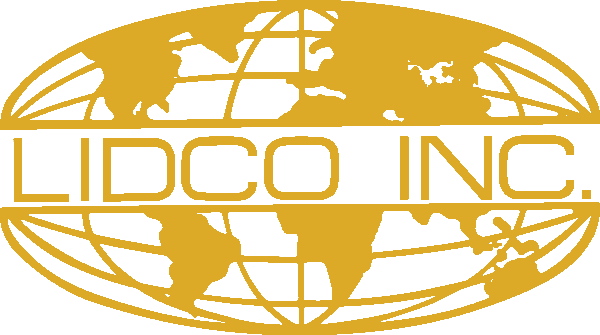Tile Recharge
Securing Water for Tomorrow
Tile Recharge Systems enable the storage of surface water in aquifers for future use. Tile Recharge helps achieve groundwater sustainability by filling aquifers, without impacting farming operations or taking land out of production.
Tile Recharge is simply a tile drainage system operated in reverse.
These systems are also known as Reverse Tile Drain, Subsurface Recharge, and Tile-MAR (Managed Aquifer Recharge).
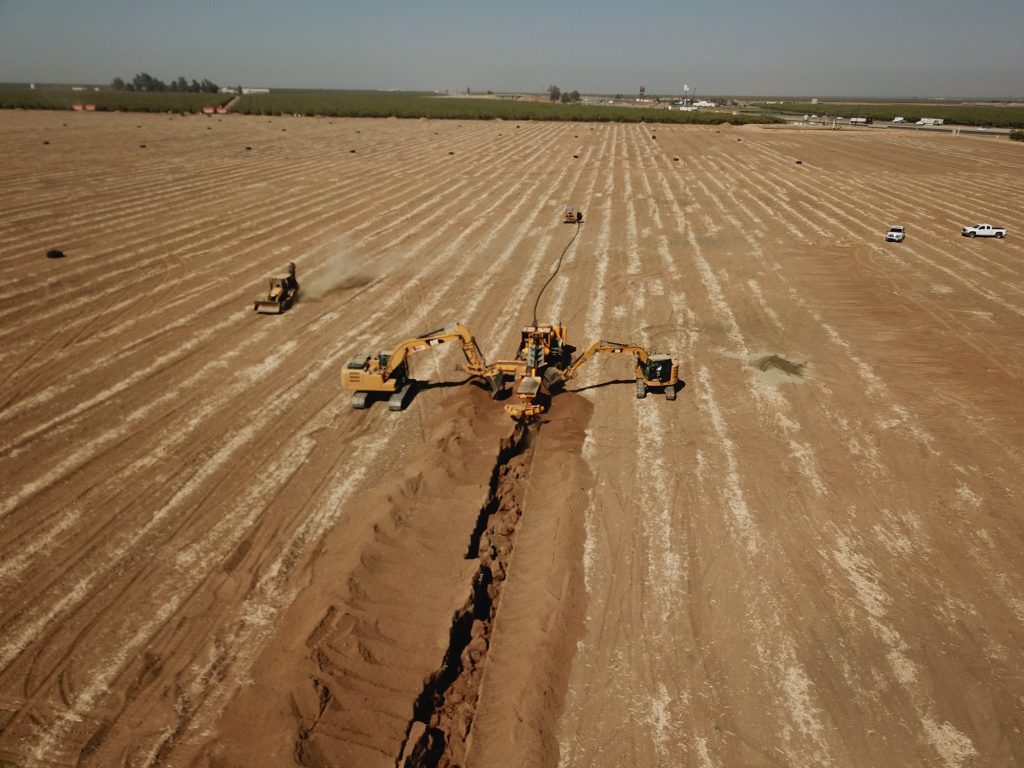
Why Recharge?
Through the Sustainable Groundwater Management Act (SGMA), water users have been tasked with the responsibility of managing their local aquifer. SGMA enables water users to store water in aquifers for future use. This stored or banked water is accounted for by the local water district and Groundwater Sustainability Agency (GSA) in the form of water credits. These water credits can be withdrawn from the aquifer when surface water is unavailable.
This gives water districts and users resiliency during times of drought.
One of the most cost effective and efficient ways to earn water credits is by utilizing Tile Recharge.
What is Tile Recharge?
Tile Recharge is simply a tile drain system operated in reverse, for the purpose of subsurface storage of excess surface water for future use.
Surface water from the district flows into standpipes connected to a network of perforated pipes.
The water discharges from the pipes into soil below the root zone of the overlying field and moves down into the aquifer.
This water is then available to the farmer as water credits for future extraction.
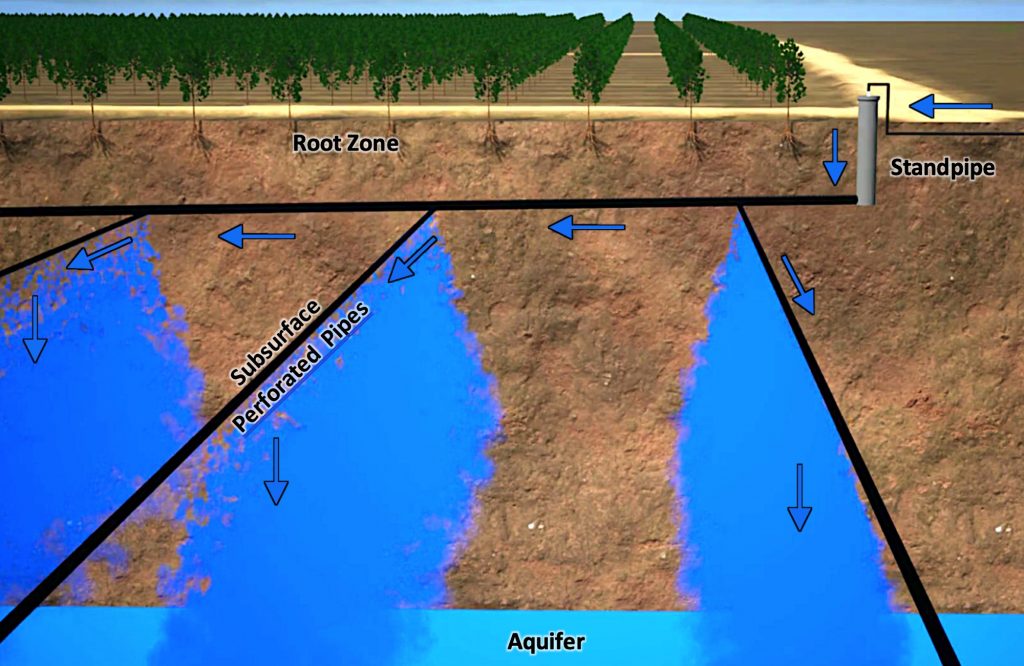
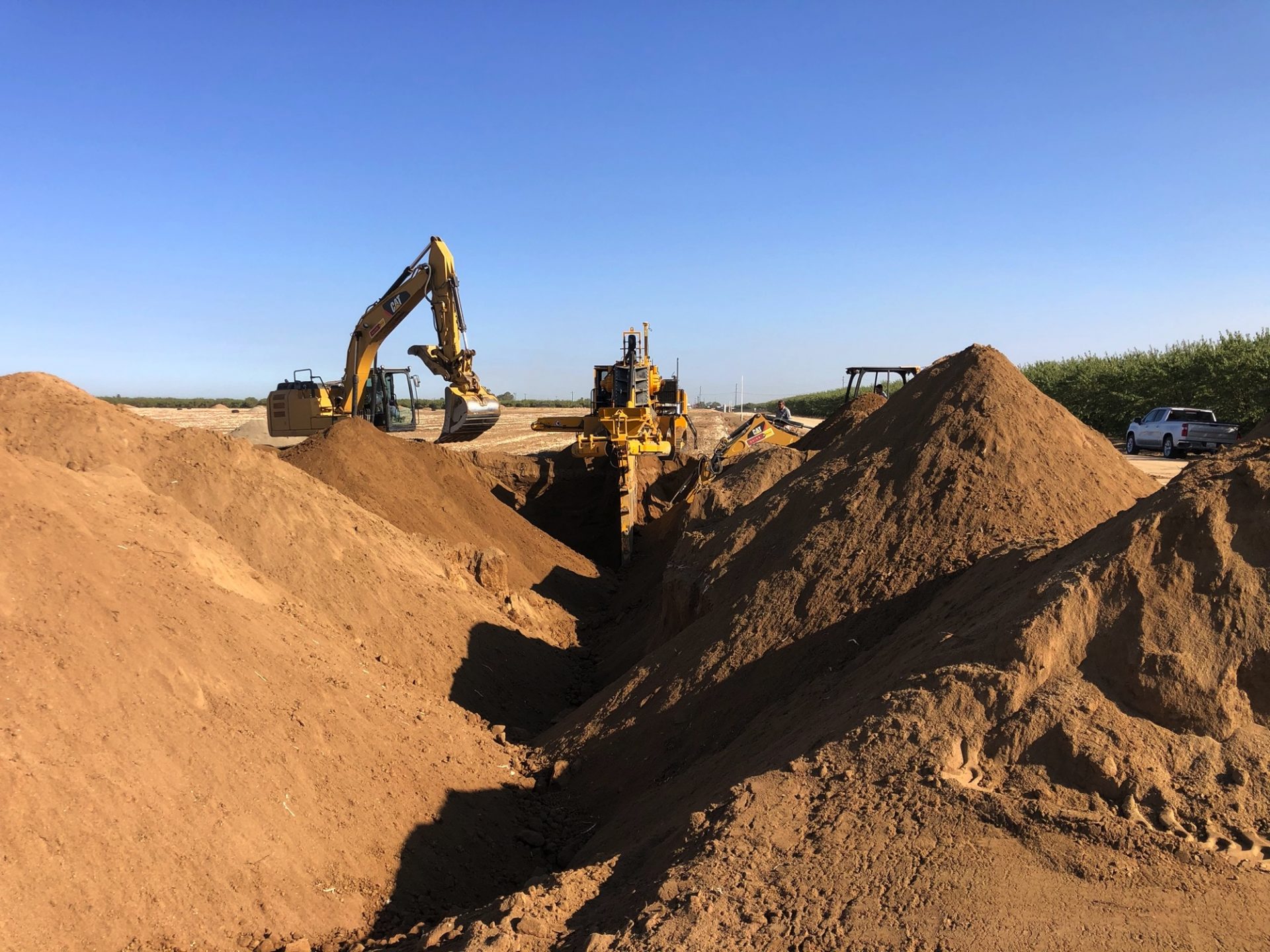
Why Tile Recharge?
Keep land productive, e.g. farm, park, golf course
Recharge year–round, if water is available
No evaporation losses
No leaching of surface fertilizers and pesticides into the groundwater
Cost less than recharge basins or Aquifer Storage and Recovery (ASR) Wells
Affective way for individual farmers/landowner to earn water credits
No Impact on Cultural Practices
This is NOT an irrigation system. Tile Recharge has no effect on the overlying crop. Farmers can continue their normal cultural practices, while recharging the aquifer below their feet.
Recharge water is kept separate and distinct from irrigation water. By recharging below the root zone farmers and districts can have confidence that 100% of the water is being used for aquifer recharge. This allows for easy accounting of water credits and efficient use of water available for recharge (WAFR).
In contrast to Flood Manager Aquifer Recharge (Flood – MAR), with Tile Recharge the farmer can recharge anytime water is available without negatively impacting the crop or cultural practices.
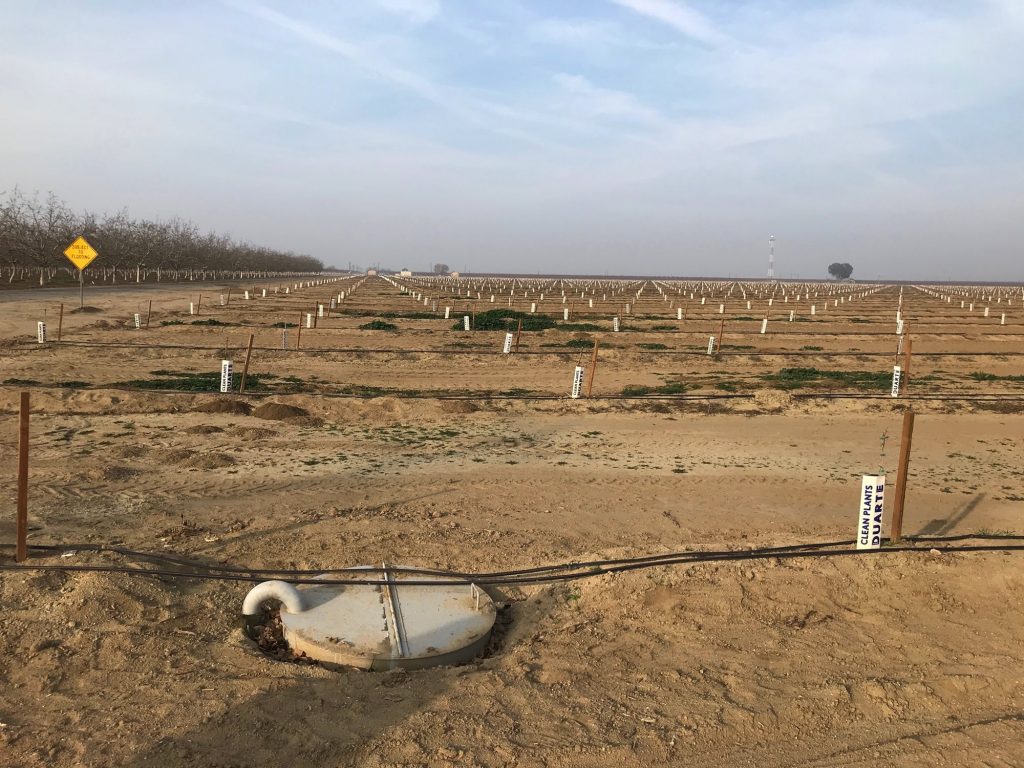
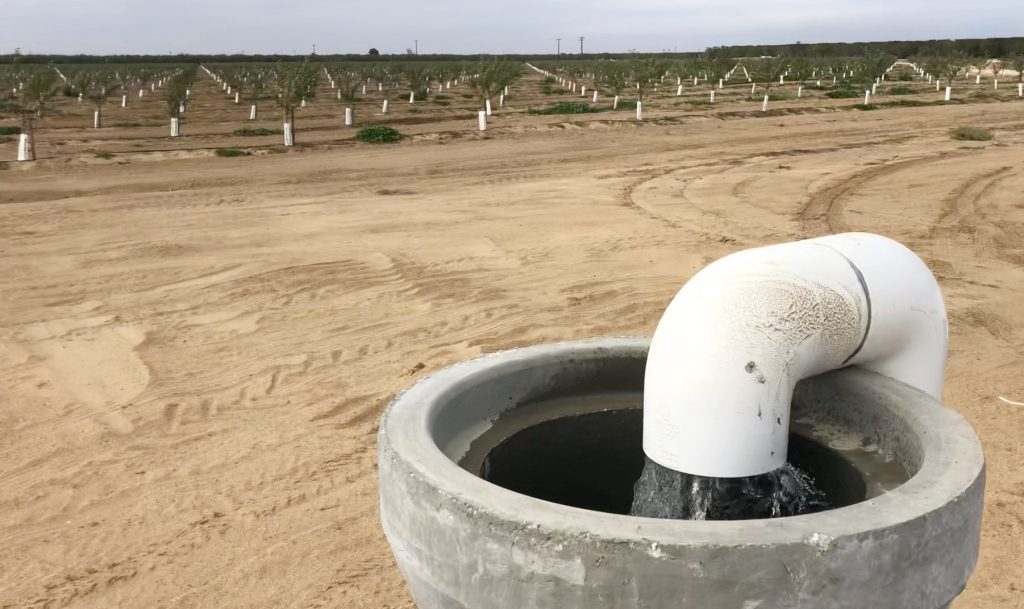
Return on Investment
Tile Recharge Systems pay for themselves by helping to keep farmland productive and through the generation of water credits. These credits can be withdrawn from the aquifer when surface water is unavailable or potentially traded.
Contact us for a Return on Investment (ROI) calculator.
“In 2019, the first year our 100-acre system was operational, we recharged 1,800 acre-feet or 18 acre-feet per acre. Enough to meet 4 years of water required for the overlying almond orchard.”
-Cale Rogers with Portwood Farms.
Design
LIDCO uses over 60 years of experience to design custom systems for every project. We take into consideration water table depth, soil infiltration rates, available turnout flow rates, topography, and other field constraints to optimize recharge performance.
LIDCO has designed and installed systems with recharge rates ranging from 400 gallons per minute (gpm) to over 20,000 gpm.
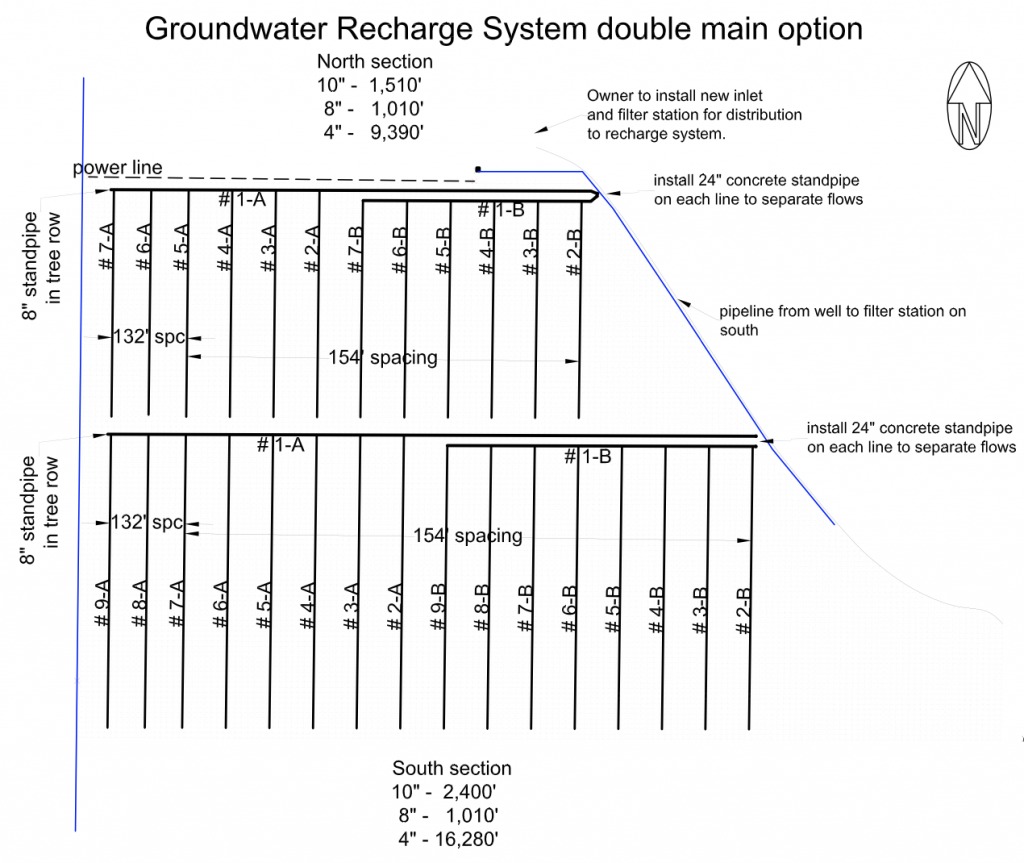
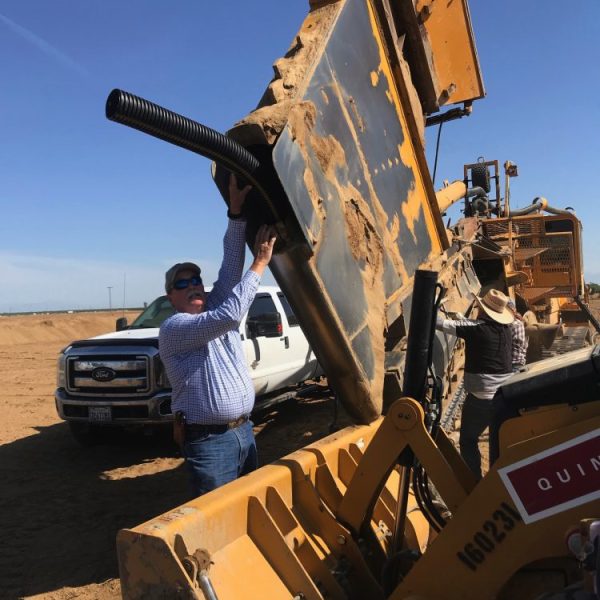
Installation
Tile Recharge Systems are typically installed in fields before the farmer plants or develops the overlying land. In a single pass, our specialized machinery cuts a trench, inserts corrugated perforated pipe at the desired depth, and surrounds the pipe with gravel.
This technique greatly reduces the cost and time of installation compared to trenching with a backhoe or excavator.
Filtration
Existing or new on-farm filtration systems are used to reduce potential clogging and maintain high infiltration rates.
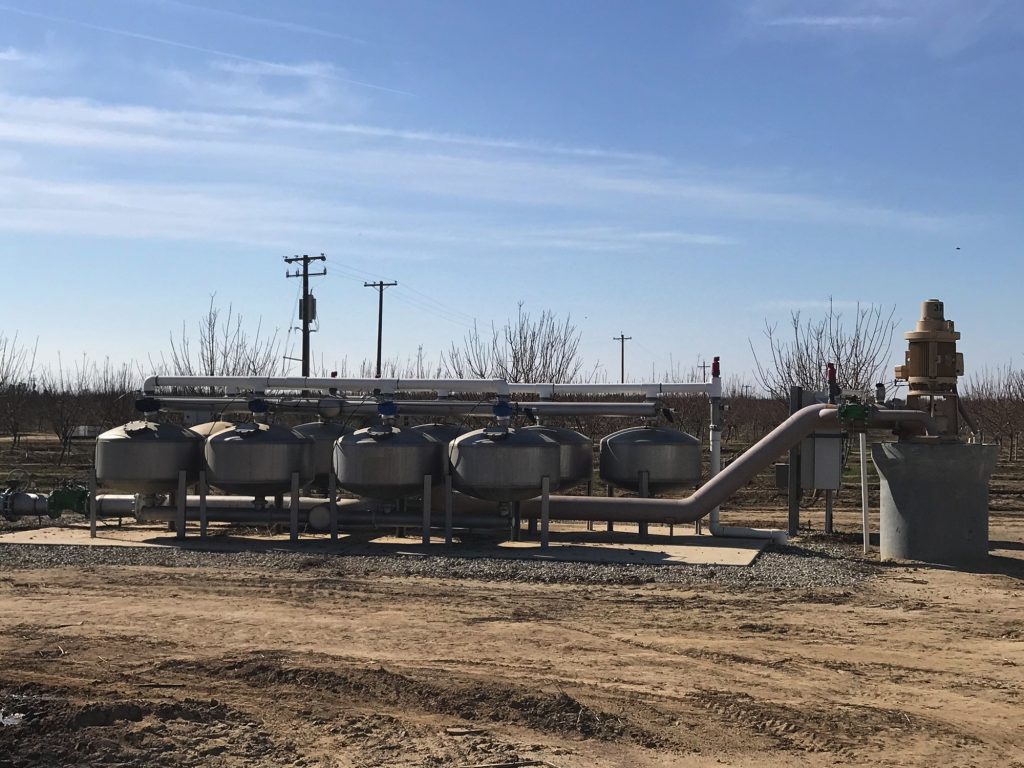
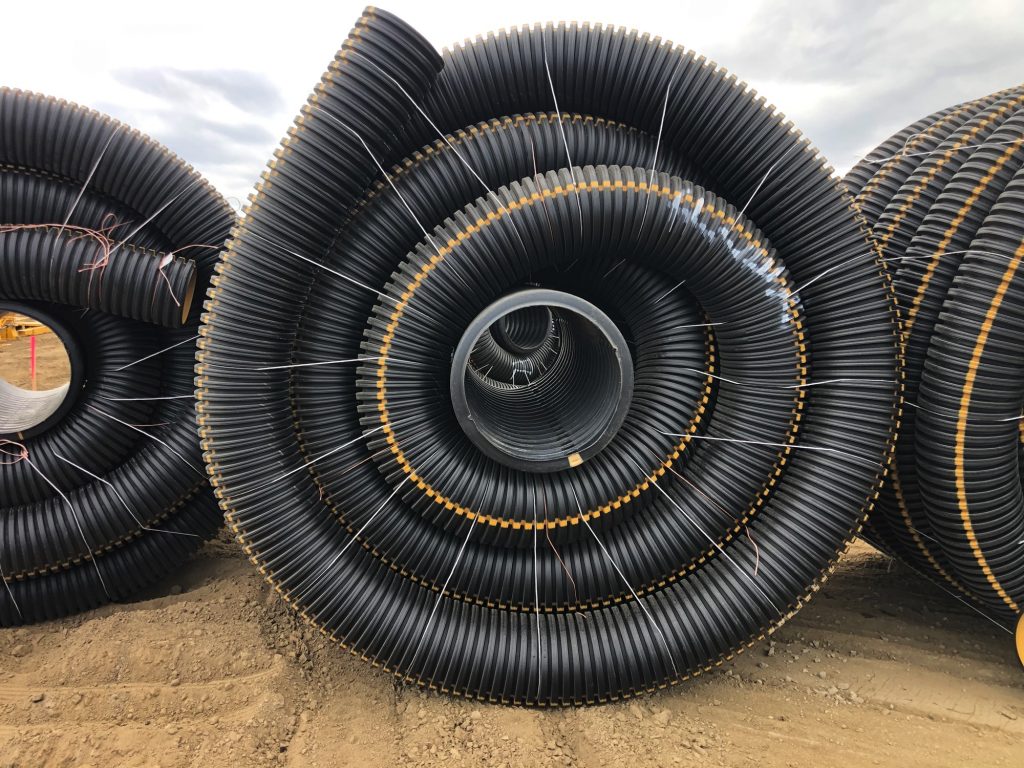
Tile Pipes
Water infiltrates into the soil through a network of perforated pipes 8 to 15 feet below the surface.
System Maintenance
Cleaning of tile drainage systems is common practice using a high pressure water jetting truck. Similar to Tile Drainage, LIDCO can perform maintenance and clean Tile Recharge Systems.
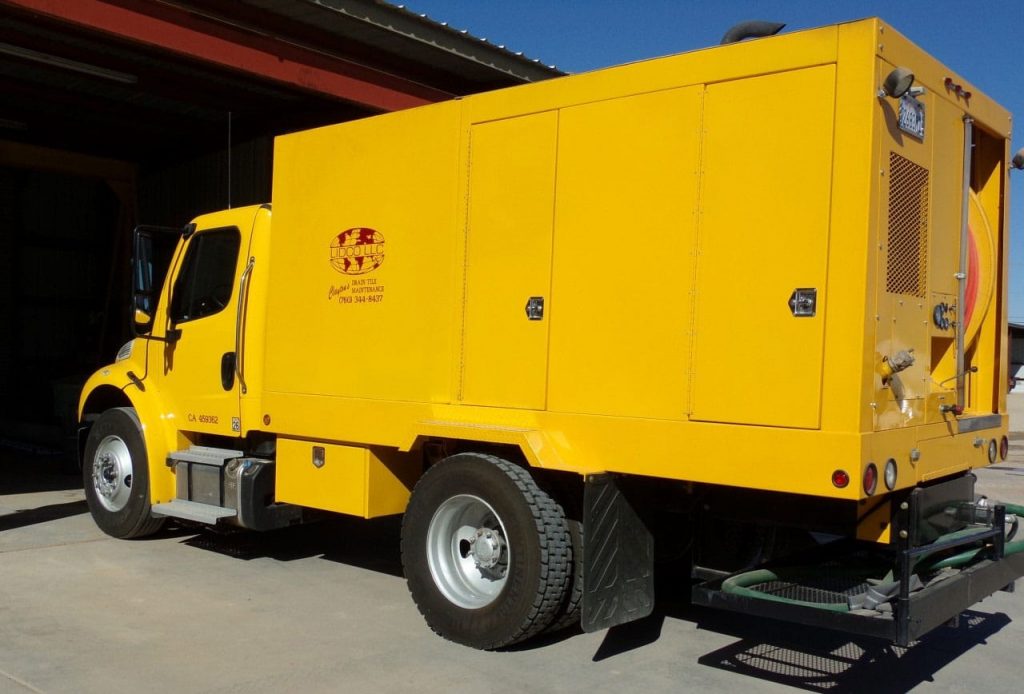
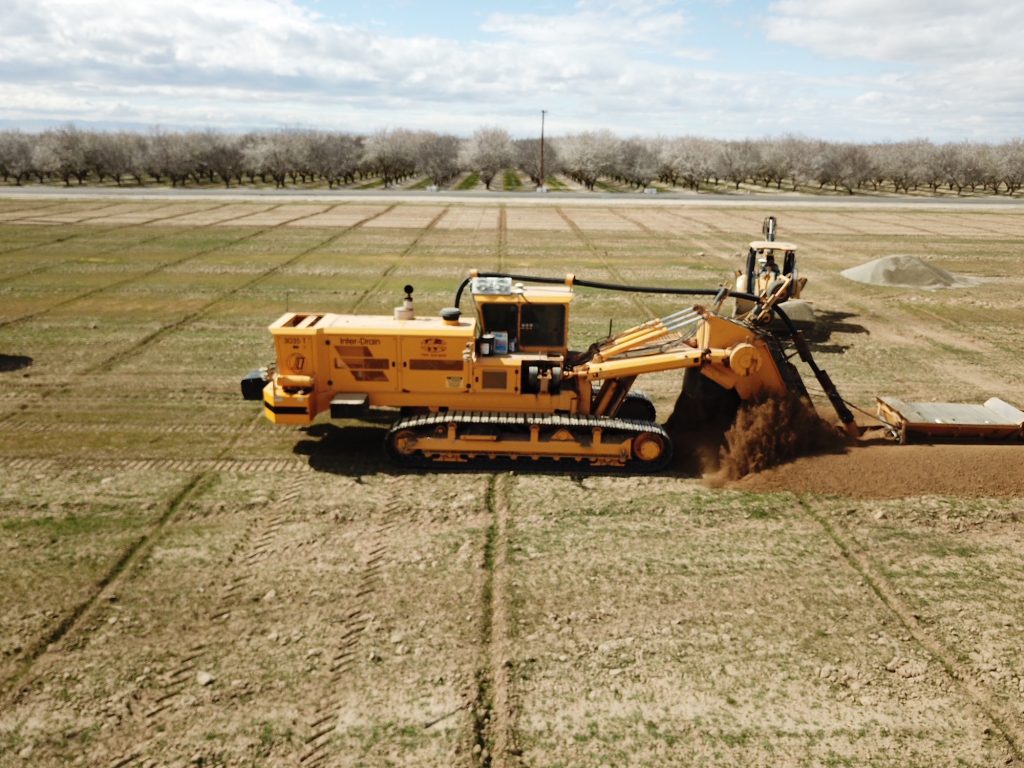
History
LIDCO has been providing on farm soil drainage and dewatering services since 1960. LIDCO provides a full range of professional drainage services. Our specialized equipment and experienced team are unmatched in the industry.
In 2017, LIDCO pioneered the installation of Tile Recharge.
